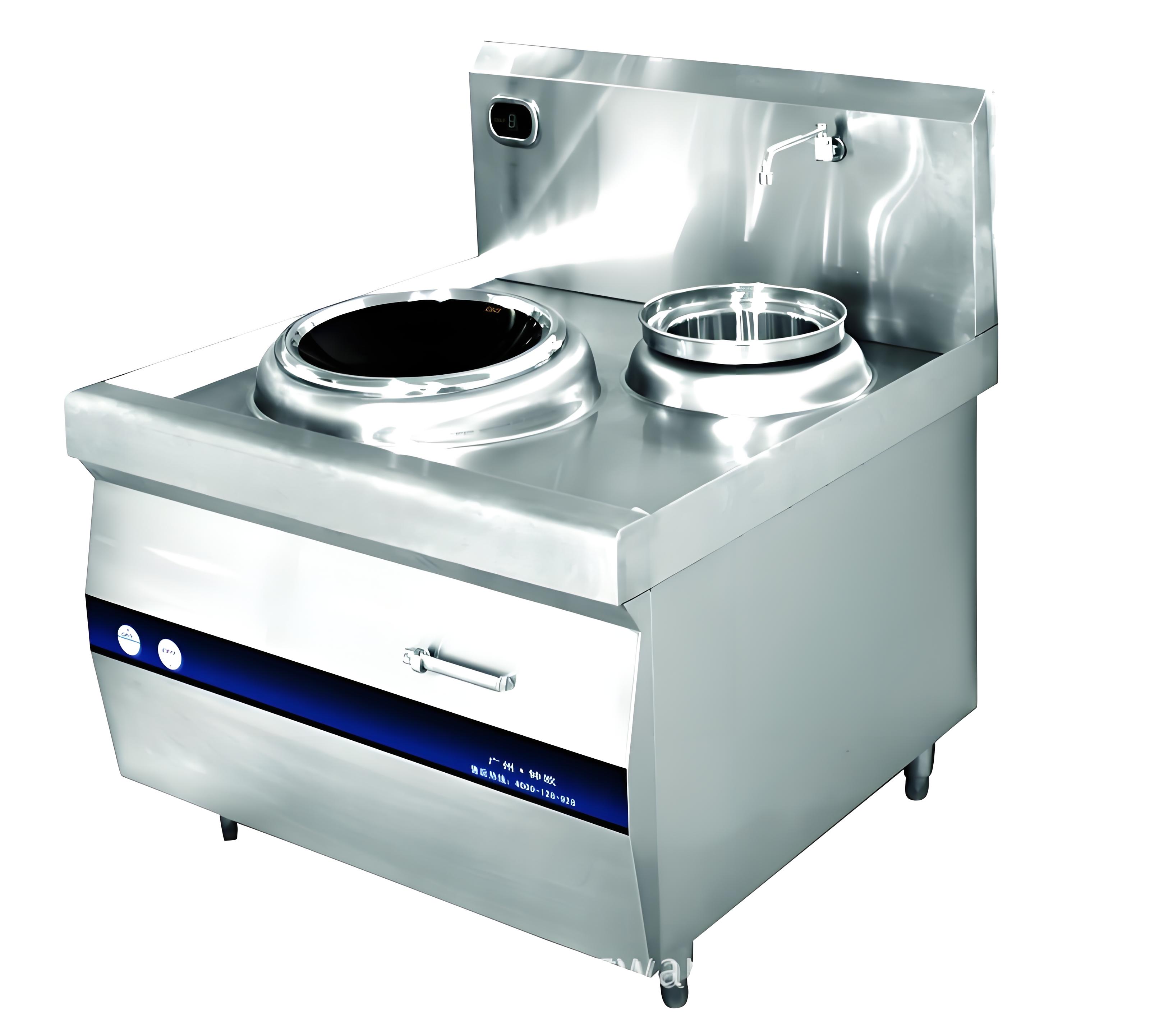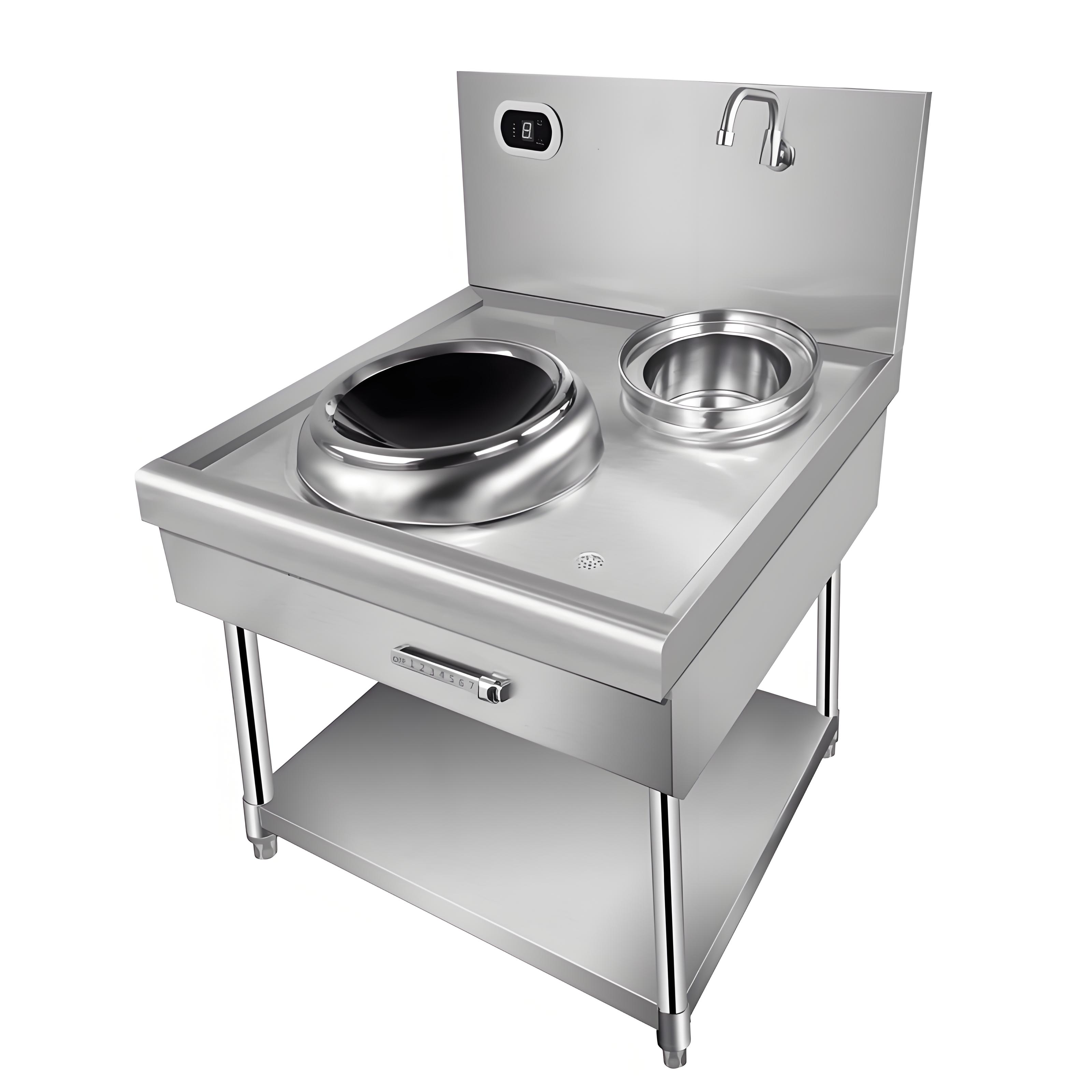As a veteran in the restaurant equipment industry, I’ve watched kitchens evolve from gas-powered behemoths to sleek, high-tech setups. One piece of equipment has consistently stood out as a game-changer for modern restaurants: the commercial induction cooktop. These powerhouses have become indispensable in professional kitchens, and for good reason. They offer unmatched efficiency, safety, and precision, transforming how chefs operate and how restaurants manage costs. Let me walk you through why induction cooktops are no longer optional but essential for any restaurant aiming to thrive in today’s competitive landscape.

The Rise of Induction in Professional Kitchens
When I first started working with restaurant owners, gas ranges dominated. They were reliable but came with drawbacks—open flames, inconsistent heat, and soaring energy bills. Then came induction cooktops, which use electromagnetic fields to heat cookware directly, bypassing the inefficiencies of traditional methods. Over the years, I’ve seen these units go from niche to mainstream, with restaurants of all sizes adopting them. Why? Because they solve real problems: high energy costs, safety concerns, and the need for precision in fast-paced environments.
Reason 1: Unparalleled Energy Efficiency
Restaurants live and die by their operating margins, and energy costs are a huge factor. Commercial induction cooktops are 30-50% more energy-efficient than gas or traditional electric ranges. They heat only the cookware, not the surrounding air, which means less wasted energy. In my experience consulting with small bistros and large chains, switching to induction often cuts energy bills by 20% or more.
Here’s a breakdown of how induction stacks up:
|
Feature |
Induction Cooktop |
Gas Range |
Electric Range |
|---|---|---|---|
|
Energy Efficiency |
85-90% | 40-55% | 65-75% |
|
Heat-Up Time |
Fast (boils water in ~2 minutes) |
Moderate (~4-5 minutes) |
Slow (~6-8 minutes) |
|
Energy Loss |
Minimal (direct cookware heating) |
High (flame dispersion) |
Moderate (element heat loss) |
|
Cost Impact |
Lower long-term costs |
Higher fuel costs |
Moderate electricity costs |
I once worked with a mid-sized restaurant that replaced their gas ranges with induction units. Within six months, their energy bill dropped by $1,200 per month, enough to cover the cost of the new equipment in under two years. For any restaurant owner watching their bottom line, this is a compelling reason to make the switch.
Reason 2: Enhanced Safety for Busy Kitchens
Kitchens are chaotic—spills, long hours, and high pressure can lead to accidents. Traditional gas ranges pose risks like open flames, gas leaks, and burns. Induction cooktops, on the other hand, stay cool to the touch unless compatible cookware is present. This cool-surface technology drastically reduces burn risks, which is a lifesaver in a bustling kitchen.
I remember a client whose line cook narrowly avoided disaster when a grease spill ignited on a gas burner. After switching to induction, they reported fewer incidents and a calmer work environment. Plus, induction units often include automatic shut-off features, cutting power if cookware is removed or overheating is detected. For restaurants prioritizing staff safety and insurance compliance, this is a no-brainer.
Reason 3: Precision Cooking for Consistent Results
Chefs thrive on control, and induction cooktops deliver. Unlike gas or electric ranges, which can have hot spots or uneven heat, induction offers precise temperature control. You can dial in exact settings—say, 180°C for searing or 80°C for simmering—and the cooktop responds instantly. This is critical for dishes requiring consistency, like delicate sauces or perfectly seared proteins.
In my years advising high-end restaurants, I’ve seen chefs rave about how induction lets them execute complex recipes with ease. One chef I worked with swore by their induction cooktop for tempering chocolate, a process where even a degree’s difference can ruin the batch. For restaurants aiming for Michelin-level precision, induction is a must.

Reason 4: Faster Cooking, Happier Customers
Speed is everything in a restaurant. Customers expect quick service, especially during peak hours. Induction cooktops heat up twice as fast as gas or electric alternatives, shaving minutes off prep times. For example, boiling a pot of water for pasta takes half the time on an induction burner compared to gas.
I once helped a busy urban café overhaul their kitchen. Their old electric ranges struggled to keep up with lunch rushes, leading to frustrated customers. After installing induction cooktops, they cut average order times by 15%, boosting customer satisfaction and table turnover. In a high-volume setting, those minutes add up fast.
Reason 5: Easier Cleaning and Maintenance
Restaurant kitchens are messy, and cleaning traditional ranges is a chore. Gas burners collect grease, and electric coils trap spills. Induction cooktops, with their smooth glass surfaces, are a breeze to clean—just a quick wipe with a damp cloth. This saves time and keeps the kitchen looking professional.
Maintenance is another win. Induction units have fewer moving parts than gas ranges (no burners to clog or igniters to fail). I’ve seen restaurants reduce maintenance costs by 30% after switching, as induction cooktops require less frequent repairs. For a busy owner, this means less downtime and more focus on serving customers.
Reason 6: Adaptability to Modern Menus
Today’s diners demand variety—vegan dishes, gluten-free options, and global cuisines. Induction cooktops are versatile, handling everything from low-and-slow braising to high-heat stir-frying. Their portability also makes them ideal for pop-up events or outdoor catering, which I’ve seen become a lifeline for restaurants diversifying revenue streams.
One client, a farm-to-table restaurant, used portable induction units for on-site cooking demos at local markets. The ability to set up anywhere with a power outlet gave them a competitive edge, drawing in new customers. Whether you’re running a fine-dining establishment or a food truck, induction adapts to your needs.
Reason 7: Environmental and Regulatory Benefits
Sustainability is no longer a buzzword—it’s a necessity. Many cities are tightening regulations on gas appliances due to emissions concerns. Induction cooktops, being fully electric, produce zero direct emissions, aligning with eco-conscious trends and future-proofing your kitchen against regulatory changes.
I worked with a restaurant in a city that banned new gas hookups. They pivoted to induction and not only complied with regulations but also marketed their “green kitchen” to eco-minded diners, boosting their brand. Plus, induction’s efficiency reduces your carbon footprint, a win for both the planet and your public image.
Overcoming Common Concerns
I often hear restaurant owners hesitate about induction due to upfront costs or cookware compatibility. Let’s address these:
Cost: Yes, commercial induction cooktops can cost $2,000-$10,000, depending on size and features. But the energy savings, reduced maintenance, and increased efficiency often recoup the investment within 1-2 years. Financing options or leasing programs can ease the initial hit.
Cookware: Induction requires ferromagnetic cookware (e.g., cast iron or certain stainless steels). While this might mean replacing some pots and pans, the investment is minor compared to the long-term benefits. Most modern kitchens already have compatible cookware.

Real-World Success Story
A few years back, I consulted for a family-owned diner struggling with high gas bills and inconsistent cooking. Their gas range was a constant headache—uneven heat led to overcooked dishes, and cleaning took hours. We installed a four-burner commercial induction cooktop with power-sharing features to manage their electrical load. The results? Energy costs dropped by 25%, cooking times improved, and the staff loved the safer, cleaner setup. Customer reviews spiked, with diners praising the consistency of their meals. That diner is now thriving, and the owner credits induction as a turning point.
Practical Tips for Adopting Induction
If you’re convinced induction is the way to go, here’s how to make the transition smooth:
Assess your electrical system: Ensure your kitchen has a 208-240 volt, 50-amp circuit to handle commercial units. Consult an electrician to avoid overloads.
Choose the right model: Look for features like power management, multiple burners, and durability for high-volume use.
Train your staff: Induction is intuitive, but a quick training session ensures chefs maximize its precision and safety features.
Invest in compatible cookware: Test existing pots and pans with a magnet—if it sticks, they’re induction-ready.
Plan for ventilation: Induction produces less ambient heat, but proper airflow prevents overheating of internal electronics.
The Future of Restaurant Kitchens
Looking ahead, I’m convinced induction cooktops will dominate professional kitchens. As energy costs rise and regulations tighten, restaurants that adopt induction now will stay ahead of the curve. I’ve seen firsthand how these units transform operations, from mom-and-pop eateries to Michelin-starred establishments. They’re not just a trend—they’re a necessity for staying competitive, safe, and sustainable.
If you’re a restaurant owner or chef, don’t wait for a crisis to make the switch. Induction cooktops deliver efficiency, safety, and precision that translate directly to better food, happier customers, and a healthier bottom line. Take it from someone who’s seen kitchens evolve over decades: this is one investment you won’t regret.

Related Questions and Answers
Q: Are commercial induction cooktops worth the high upfront cost?
A: Absolutely. While they can cost $2,000-$10,000, the energy savings (up to 30% lower bills), reduced maintenance, and faster cooking often pay off within 1-2 years. Plus, safety and precision boost staff morale and customer satisfaction.
Q: Can induction cooktops handle high-volume restaurant cooking?
A: Yes, modern commercial units are built for heavy use, with multiple burners and power-sharing features to manage demand. They’re ideal for everything from quick-service to fine dining.
Q: Do I need to replace all my cookware for induction?
A: Not necessarily. Cookware must be ferromagnetic (test with a magnet). Many restaurants already have compatible pots and pans, but budgeting $500-$1,000 for new ones ensures you’re fully equipped.
Q: How do induction cooktops compare to gas for wok cooking?
A: High-power induction units (e.g., 3,600 watts per burner) can match gas for high-heat wok cooking, with better precision and no open flames. Look for models with concave burners designed for woks.





